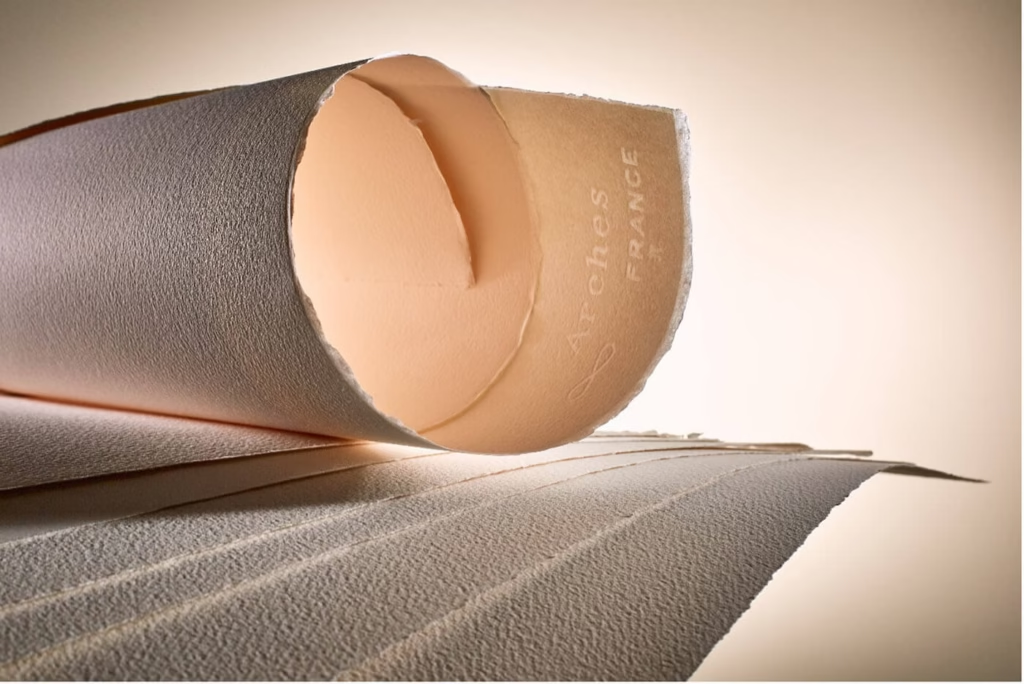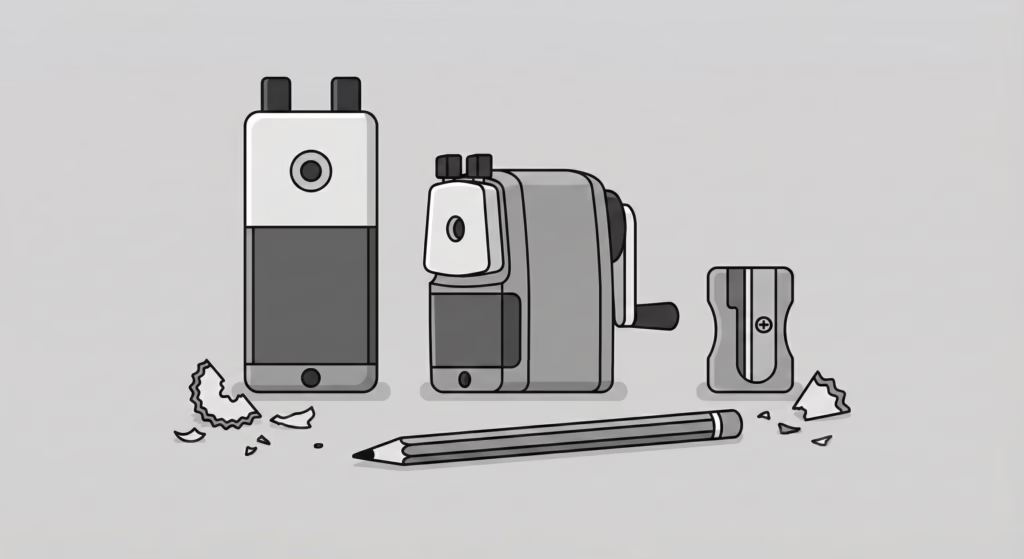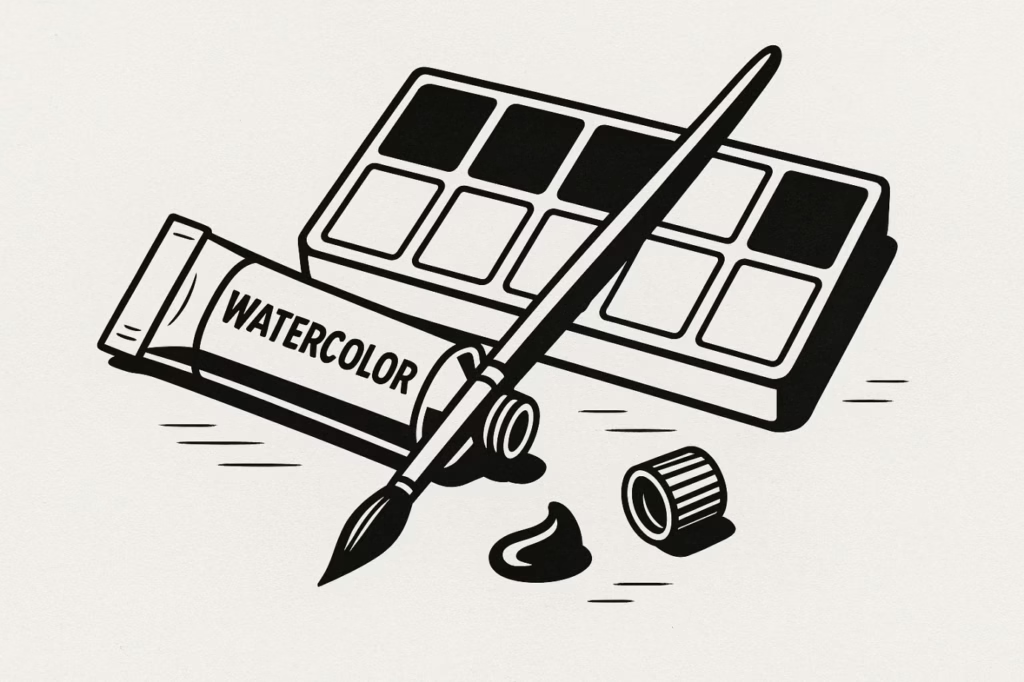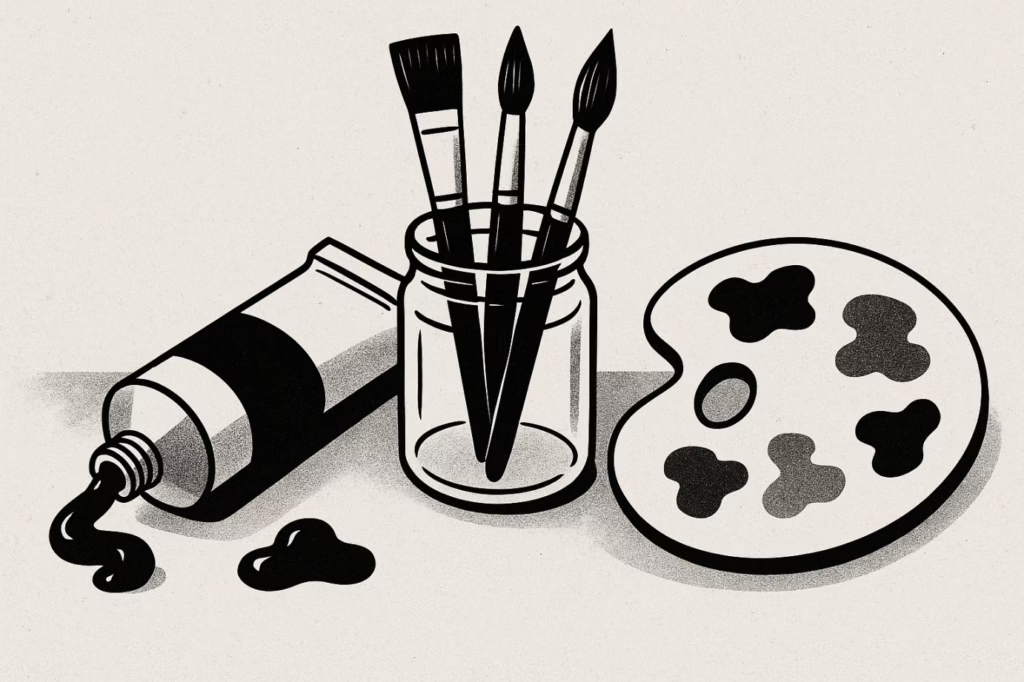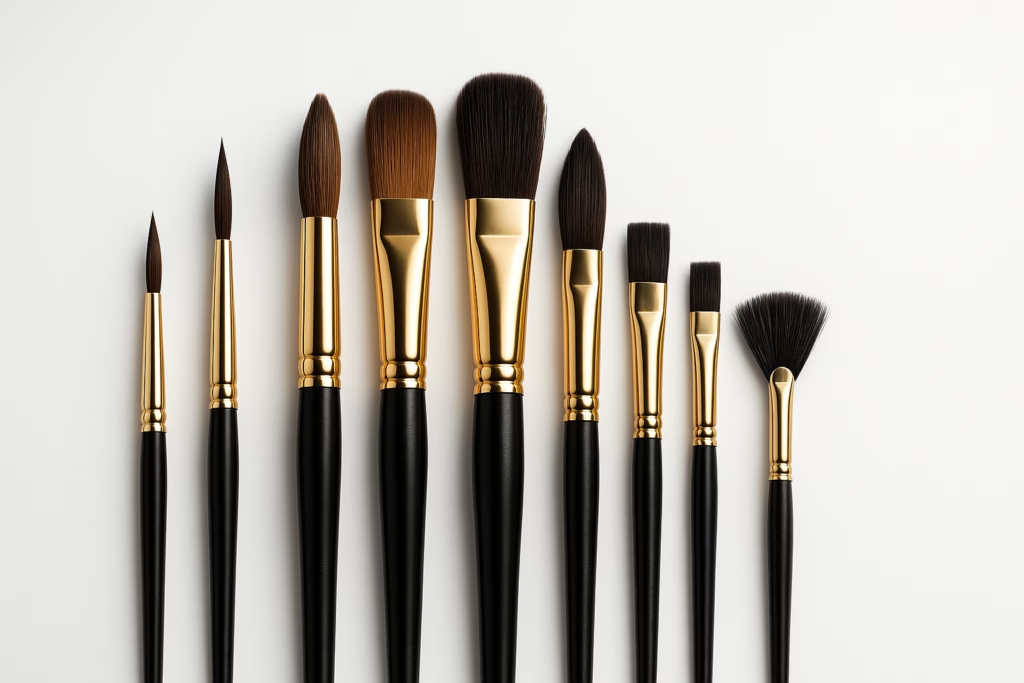Last Updated: September 2025 | Expert Review by Professional Watercolor Artist
After testing over 50 different watercolor papers across six years of professional painting and teaching, I can definitively say that paper is the single most important factor in watercolor success—more crucial than your paints, brushes, or technique. The wrong paper can turn a masterpiece into a disaster, while the right paper can elevate even beginner work to professional standards.
In this comprehensive guide, I’ll share my scientifically-tested rankings of the top 10 papers for watercolor, based on rigorous evaluation of absorbency, durability, texture, color vibrancy, and value. Whether you’re a complete beginner or a seasoned professional, this guide will help you choose the perfect paper for your artistic journey.
Quick Paper Selection Guide
Need an immediate recommendation? Choose based on your situation:
For Beginners (Budget: $10-30): Canson XL Series or Strathmore 400 Series
For Intermediate Artists (Budget: $30-60): Saunders Waterford or Fluid 100
For Professional Work (Budget: $60-120): Arches or Hahnemühle Leonardo
For Botanical Illustration: Any hot-pressed 100% cotton paper
For Loose, Expressive Work: Cold-pressed or rough texture papers
For Maximum Durability: 300lb (640gsm) weight papers
Understanding Watercolor Paper: The Foundation of Great Art
Before diving into our top 10 rankings, let’s understand what makes watercolor paper special. Unlike regular paper, watercolor paper is specifically engineered to handle large amounts of water while maintaining structural integrity and color vibrancy.
The Science of Watercolor Paper
Composition Matters: Professional watercolor papers are made from 100% cotton fibers, which provide superior strength and absorbency compared to wood pulp alternatives. Cotton fibers create microscopic pockets that hold water and pigment, allowing for better paint control and more vibrant colors.
Sizing: The Secret Ingredient: All watercolor papers are treated with “sizing”—a gelatinous coating that controls absorbency. Too little sizing and your paint will bleed uncontrollably; too much and you’ll struggle with smooth washes. The best papers achieve the perfect balance.
Manufacturing Methods:
- Handmade: The premium option, featuring irregular texture and exceptional durability
- Mold-made: Machine-assisted but retaining handmade qualities
- Machine-made: Most affordable, suitable for practice and studies
Top 10 Papers for Watercolor: Expert Rankings 2025
Each paper has been tested using standardized criteria: a controlled wash test, detailed brushwork evaluation, lifting capability assessment, and long-term durability analysis.
1. Arches Watercolor Paper – The Gold Standard
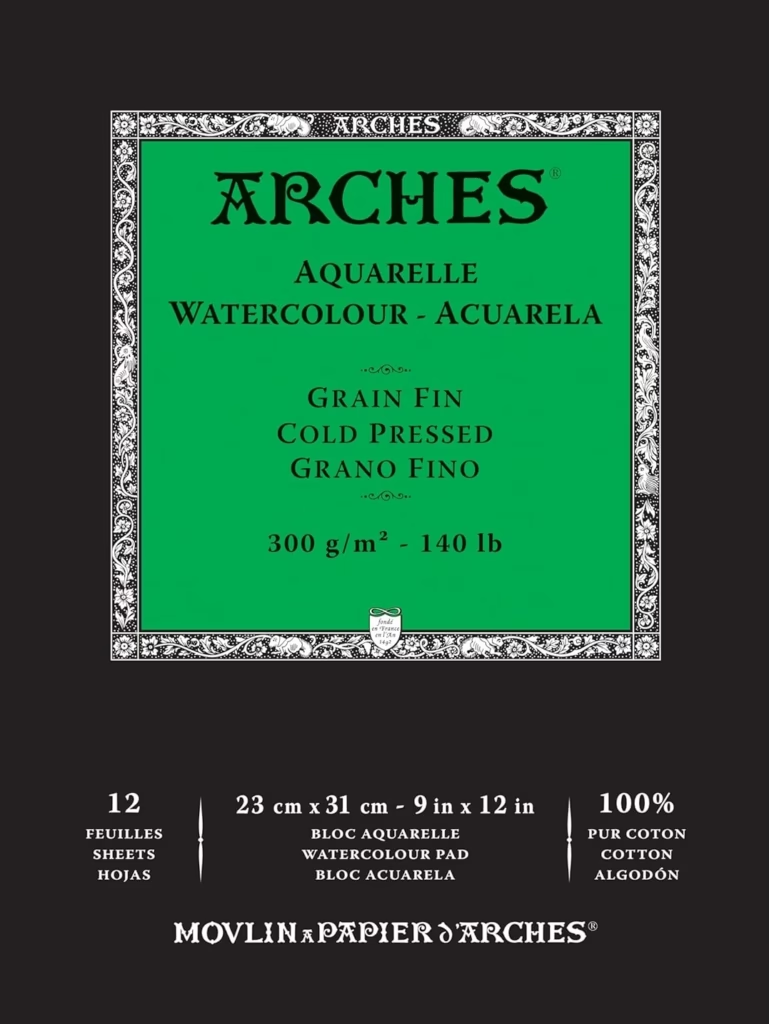
Rating: 9.8/10 | Price Range: $2.50-4.00 per sheet
Why It’s #1: Arches has earned its legendary status through 500+ years of papermaking excellence. Made in France from 100% cotton with traditional gelatine sizing, this mold-made paper offers unparalleled consistency and performance.
Technical Specifications:
- Composition: 100% cotton, mold-made
- Available Weights: 90lb, 140lb, 300lb (190, 300, 640 gsm)
- Textures: Hot Press, Cold Press, Rough
- Sizing: Traditional gelatine sizing
Performance Analysis:
- Absorbency (9.5/10): Perfect water retention without over-saturation
- Durability (10/10): Withstands aggressive techniques and multiple layers
- Color Vibrancy (9.8/10): Exceptional color clarity and luminosity
- Texture Quality (9.7/10): Consistent, pleasing tooth that enhances technique
- Value (8.5/10): Premium pricing justified by superior performance
Best For: Professional work, exhibition pieces, artists seeking consistent results Avoid If: Budget is primary concern or you’re just starting out
2. Saunders Waterford – The Professional’s Choice
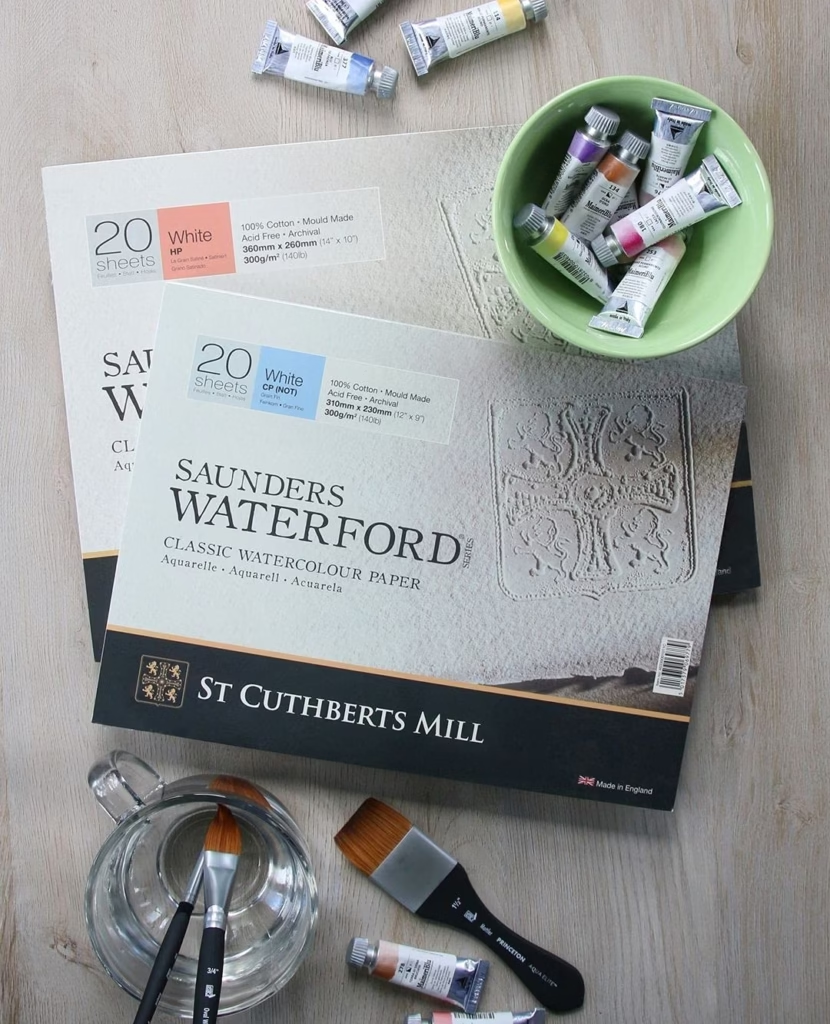
Rating: 9.6/10 | Price Range: $1.80-3.20 per sheet
Why It’s Exceptional: Made by St. Cuthbert’s Mill (the same company behind many Winsor & Newton papers), Saunders Waterford offers Arches-level quality at a more accessible price point. Many professional artists consider this their secret weapon.
Technical Specifications:
- Composition: 100% cotton, mold-made
- Available Weights: 90lb, 140lb, 200lb, 300lb, 425lb, 638lb
- Textures: Hot Press (Smooth), Not (Cold Press), Rough
- Sizing: Gelatine sized for optimal paint flow
Performance Analysis:
- Absorbency (9.4/10): Slightly more thirsty than Arches, excellent for wet techniques
- Durability (9.6/10): Extremely tough, handles scrubbing and lifting beautifully
- Color Vibrancy (9.5/10): Brilliant whites that make colors pop
- Texture Quality (9.7/10): Distinctive texture that enhances brushwork
- Value (9.8/10): Outstanding quality-to-price ratio
Best For: Professional portraits, detailed work, artists transitioning from student grade Pro Tip: Many artists find Saunders Waterford slightly more forgiving than Arches for complex techniques.
3. Hahnemühle Leonardo – German Engineering Excellence
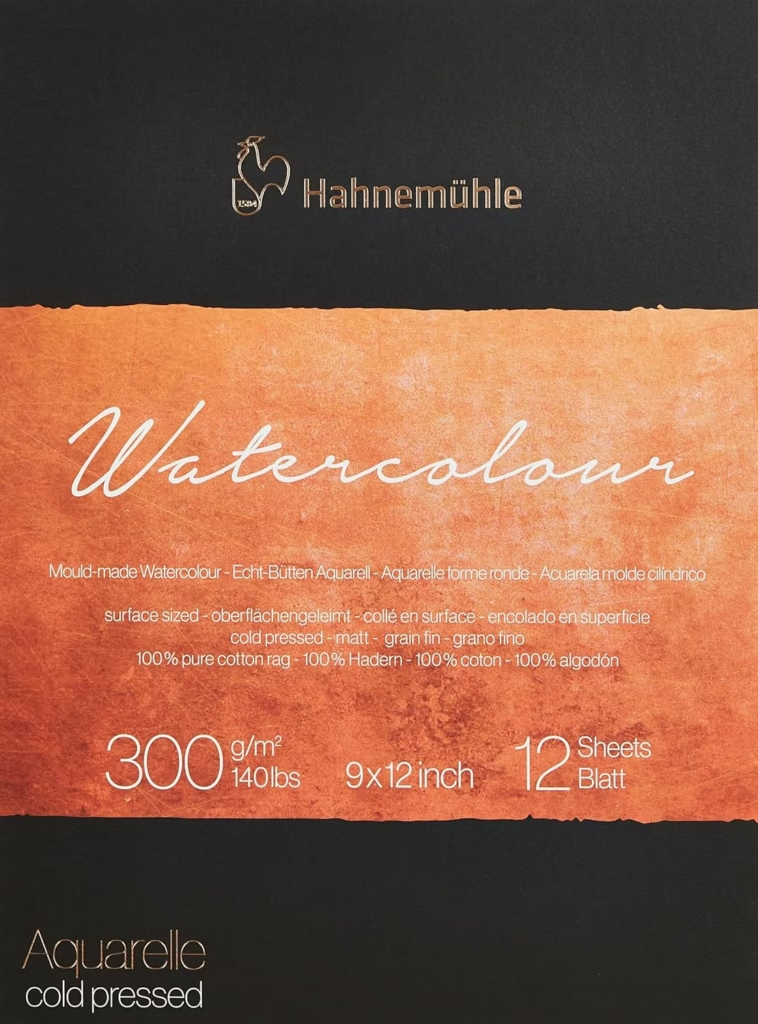
Rating: 9.4/10 | Price Range: $2.20-3.80 per sheet
Why It Stands Out: This German-made paper represents over 400 years of papermaking expertise. The surface sizing creates an almost magical paint flow that many artists become addicted to once they try it.
Technical Specifications:
- Composition: 100% cotton, mold-made on cylinder mould
- Available Weights: 140lb, 300lb (300, 600 gsm)
- Textures: Hot Press, Cold Press, Rough
- Sizing: Surface sized for exceptional paint control
Performance Analysis:
- Absorbency (9.2/10): Controlled absorption perfect for detailed work
- Durability (9.3/10): German quality engineering shows in longevity
- Color Vibrancy (9.6/10): Surface sizing enhances color brilliance
- Texture Quality (9.5/10): Refined texture ideal for realistic work
- Value (9.0/10): Premium but worth every penny
Best For: Botanical illustration, architectural subjects, photorealistic painting Artist Insight: The surface sizing makes this paper particularly responsive to granulating pigments.
4. Fabriano Artistico – Italian Tradition Meets Modern Performance
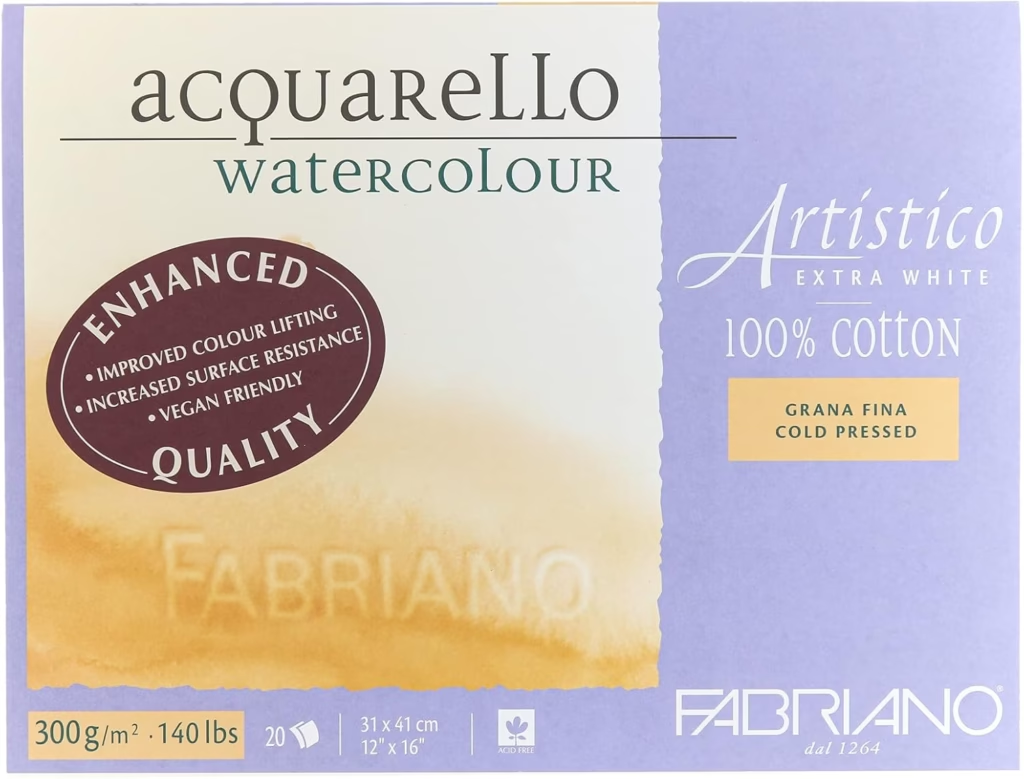
Rating: 9.2/10 | Price Range: $1.60-2.80 per sheet
Why It’s Remarkable: From the birthplace of watercolor paper (Fabriano, Italy), this paper combines 750+ years of tradition with modern manufacturing. The unique vegan sizing makes it increasingly popular among environmentally conscious artists.
Technical Specifications:
- Composition: 100% cotton, mold-made
- Available Weights: 140lb, 300lb (300, 640 gsm)
- Textures: Hot Press, Cold Press, Rough, Extra Rough
- Sizing: Synthetic vegan sizing (no animal products)
Performance Analysis:
- Absorbency (9.0/10): Well-controlled water handling with excellent layering capability
- Durability (9.4/10): Exceptional strength allows for aggressive techniques
- Color Vibrancy (9.3/10): Clean whites with excellent color saturation
- Texture Quality (9.2/10): Distinctive Italian character in texture
- Value (9.5/10): Excellent performance at competitive pricing
Best For: Layered paintings, artists with animal product concerns, large washes Unique Feature: The vegan sizing makes colors more liftable until fully dry, extending working time.
5. Canson Heritage – Innovation in Tradition
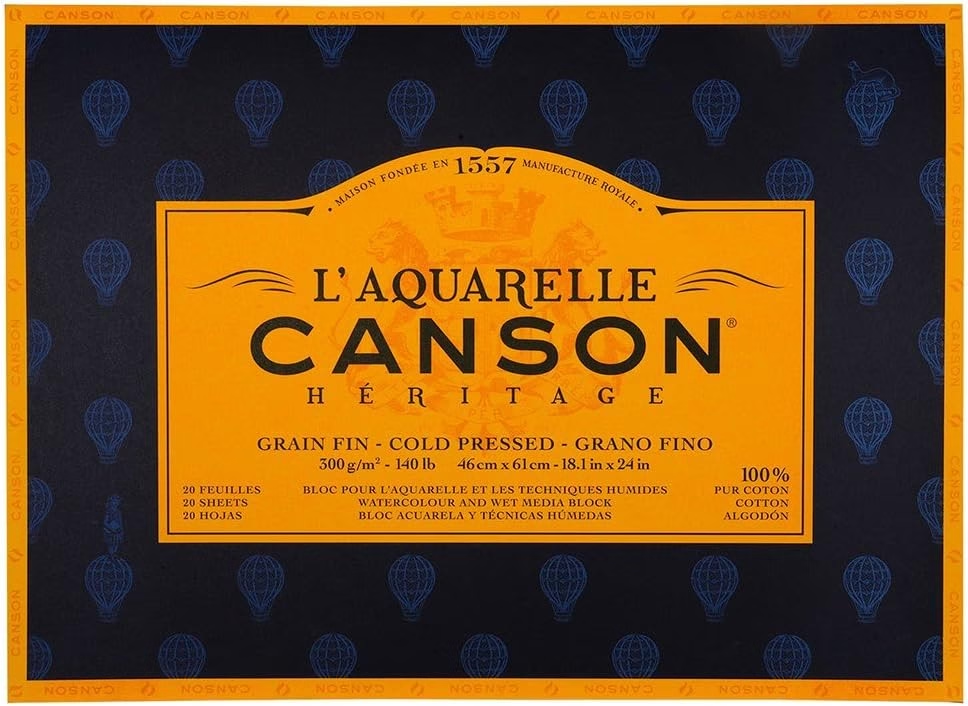
Rating: 9.0/10 | Price Range: $1.70-3.00 per sheet
Why It’s Special: Canson’s premium offering features innovative non-animal sizing that creates unique painting characteristics. Many artists appreciate its distinctive handling properties that differ from traditional gelatine-sized papers.
Technical Specifications:
- Composition: 100% cotton, mold-made
- Available Weights: 140lb, 300lb (300, 640 gsm)
- Textures: Cold Press, Rough
- Sizing: Non-animal synthetic sizing
Performance Analysis:
- Absorbency (8.8/10): Controlled absorption with extended working time
- Durability (9.1/10): French quality construction with excellent longevity
- Color Vibrancy (9.0/10): Good color depth and clarity
- Texture Quality (9.0/10): Pleasant texture that enhances brushwork
- Value (9.3/10): Strong performer in the mid-premium range
Best For: Artists wanting extended working time, eco-conscious painters, experimental techniques Note: The synthetic sizing creates different lifting characteristics than traditional papers.
6. Fluid 100 Watercolor Paper – American Innovation
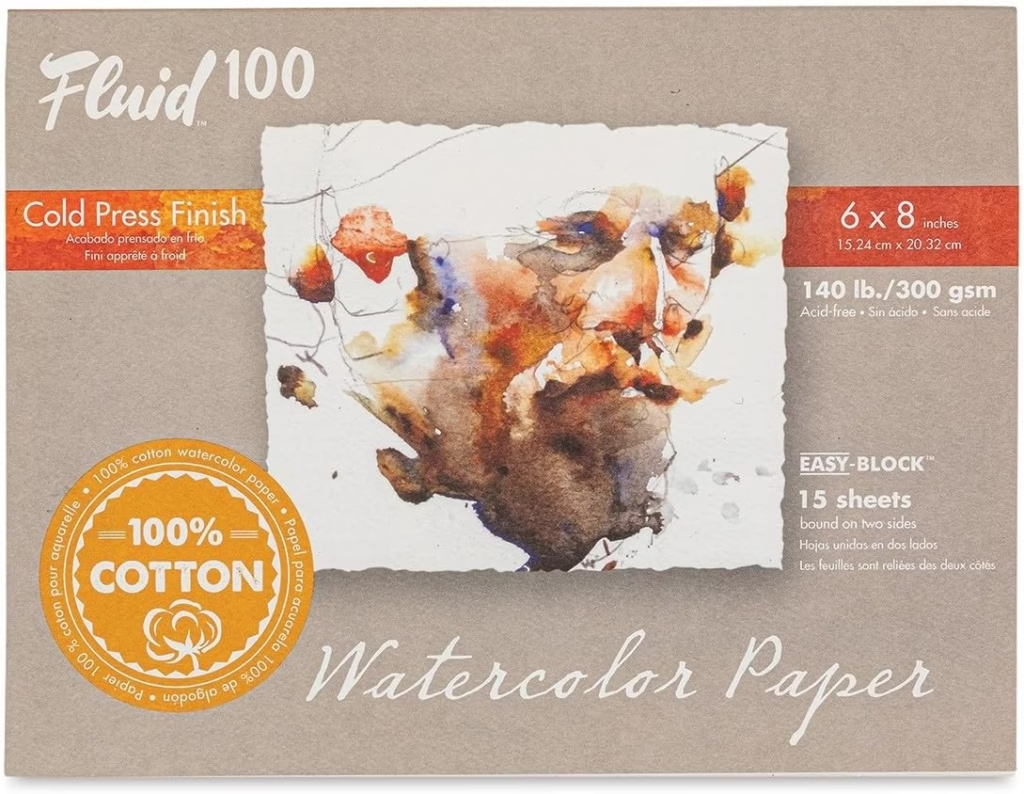
Rating: 8.8/10 | Price Range: $1.40-2.60 per sheet
Why It’s Noteworthy: This American-made paper offers excellent quality at an accessible price point. It’s become increasingly popular among art educators and serious hobbyists for its consistent performance and value.
Technical Specifications:
- Composition: 100% cotton, mold-made
- Available Weights: 140lb, 300lb (300, 640 gsm)
- Textures: Hot Press, Cold Press, Rough
- Sizing: Internal and external sizing for balanced performance
Performance Analysis:
- Absorbency (8.6/10): Good water handling with predictable behavior
- Durability (8.8/10): Solid construction handles most techniques well
- Color Vibrancy (8.7/10): Clean colors with good saturation
- Texture Quality (8.5/10): Pleasant working surface
- Value (9.6/10): Outstanding quality for the price point
Best For: Art students, serious hobbyists, large-scale work where cost matters Economy Tip: Often available in bulk at significant savings for studios and classrooms.
7. Winsor & Newton Professional Watercolor Paper – Reliable Performance
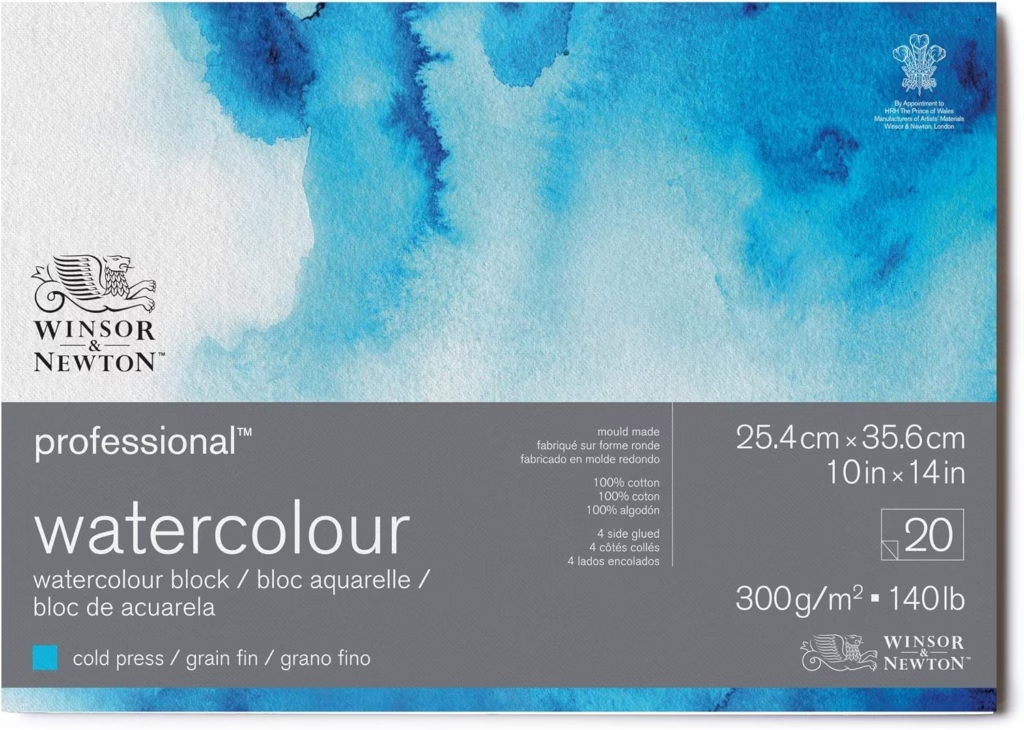
Rating: 8.6/10 | Price Range: $1.50-2.70 per sheet
Why It’s Dependable: Manufactured by Saunders Waterford (same as #2), this paper offers similar quality characteristics under the trusted Winsor & Newton brand. It’s particularly popular among artists who prefer brand consistency across their supplies.
Technical Specifications:
- Composition: 100% cotton, mold-made
- Available Weights: 140lb, 300lb (300, 640 gsm)
- Textures: Hot Press, Cold Press
- Sizing: Traditional gelatine sizing
Performance Analysis:
- Absorbency (8.5/10): Well-balanced water absorption
- Durability (8.7/10): Strong performance under various techniques
- Color Vibrancy (8.6/10): Good color representation
- Texture Quality (8.4/10): Consistent, workable surface
- Value (8.8/10): Fair pricing for the quality delivered
Best For: Artists seeking brand consistency, intermediate-level work, general watercolor painting Brand Advantage: Excellent customer service and widely available globally.
8. Strathmore 400 Series Watercolor Paper – Best Student Upgrade
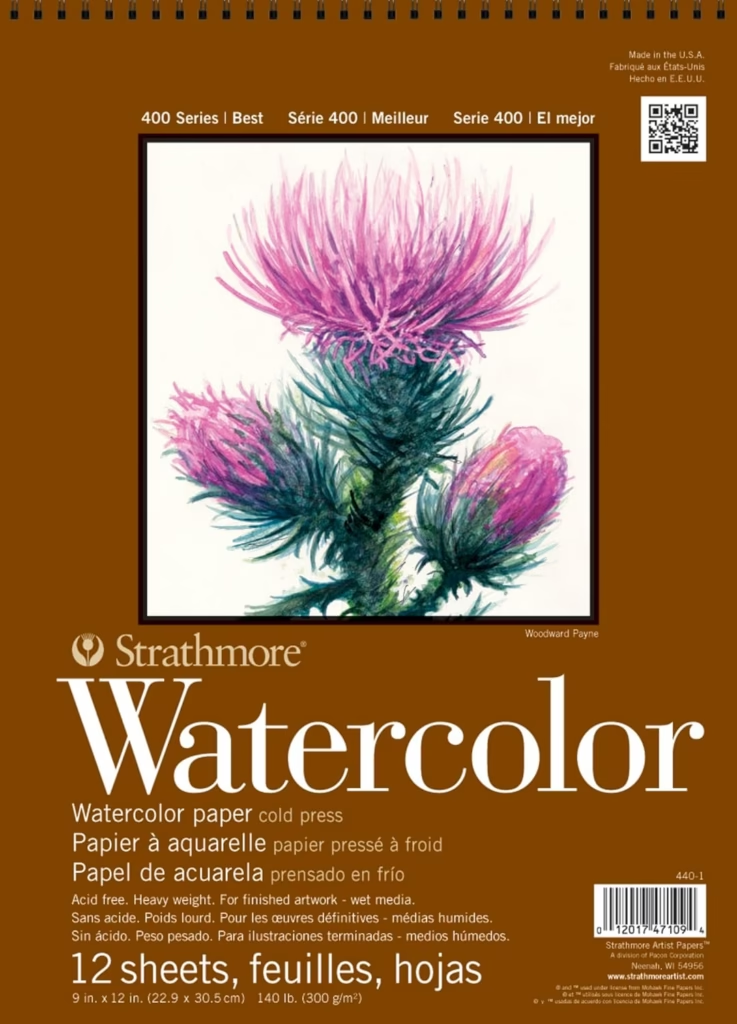
Rating: 8.2/10 | Price Range: $0.80-1.50 per sheet
Why It’s Smart: This represents the top tier of student-grade papers, offering surprising quality at budget-friendly prices. It’s the perfect stepping stone for artists ready to move beyond basic papers but not quite ready for premium pricing.
Technical Specifications:
- Composition: Mix of cotton and cellulose fibers
- Available Weights: 140lb (300 gsm)
- Textures: Cold Press
- Sizing: Internally and surface sized
Performance Analysis:
- Absorbency (7.8/10): Good water handling for mixed-fiber construction
- Durability (8.0/10): Reasonable strength for most techniques
- Color Vibrancy (8.2/10): Surprisingly good color clarity
- Texture Quality (8.0/10): Pleasant working surface
- Value (9.8/10): Exceptional value in this price range
Best For: Advanced beginners, practice work, art students, large experimental pieces Budget Strategy: Perfect for learning techniques before investing in premium papers.
9. Stonehenge Aqua Paper – American Innovation for Wet Media
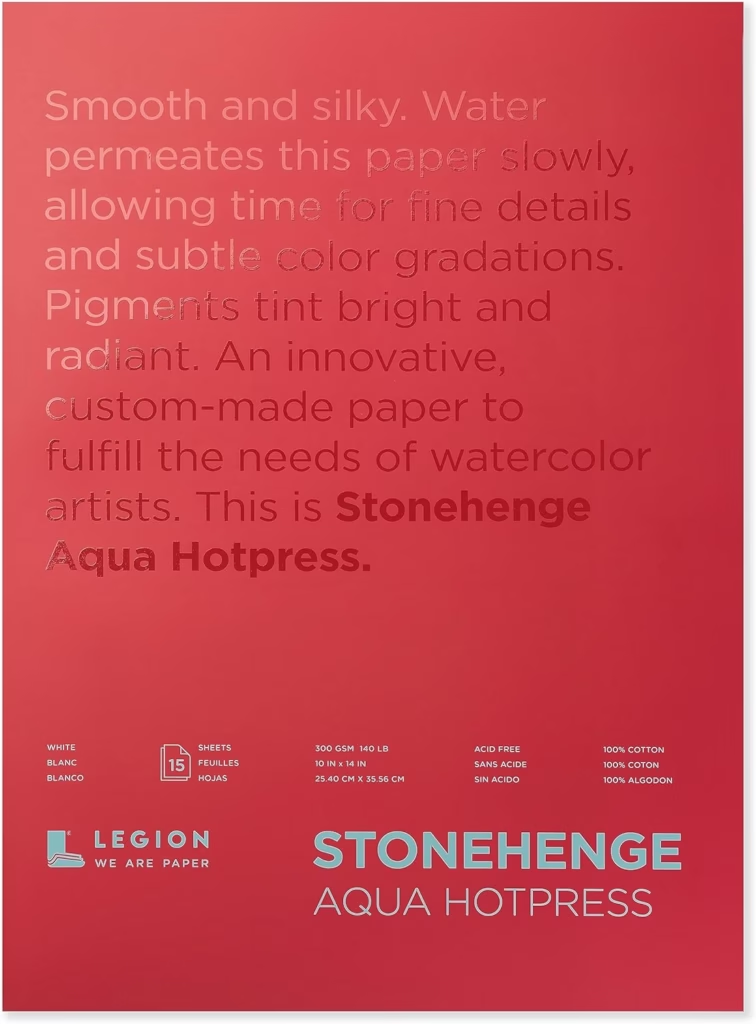
Rating: 8.0/10 | Price Range: $1.30-2.40 per sheet
Why It’s Worth Knowing: This Legion Paper product represents innovative American papermaking specifically designed for wet media applications. Made from 100% cotton with a unique surface treatment, Stonehenge Aqua offers characteristics that many artists find addictive once discovered.
Technical Specifications:
- Composition: 100% cotton
- Available Weights: 140lb, 300lb (300, 640 gsm)
- Textures: Cold Press
- Sizing: Specially formulated for optimal wet media performance
Performance Analysis:
- Absorbency (8.2/10): Excellent water handling with controlled spread
- Durability (8.0/10): Good strength for most watercolor techniques
- Color Vibrancy (8.1/10): Clean color response with good saturation
- Texture Quality (8.3/10): Distinctive surface that enhances paint flow
- Value (8.7/10): Strong performance at competitive pricing
Best For: Mixed media artists, those seeking American-made options, experimental techniques Unique Feature: Works exceptionally well with both watercolor and other wet media like gouache and acrylic ink.
10. Canson XL Series Watercolor Paper – Best for Beginners
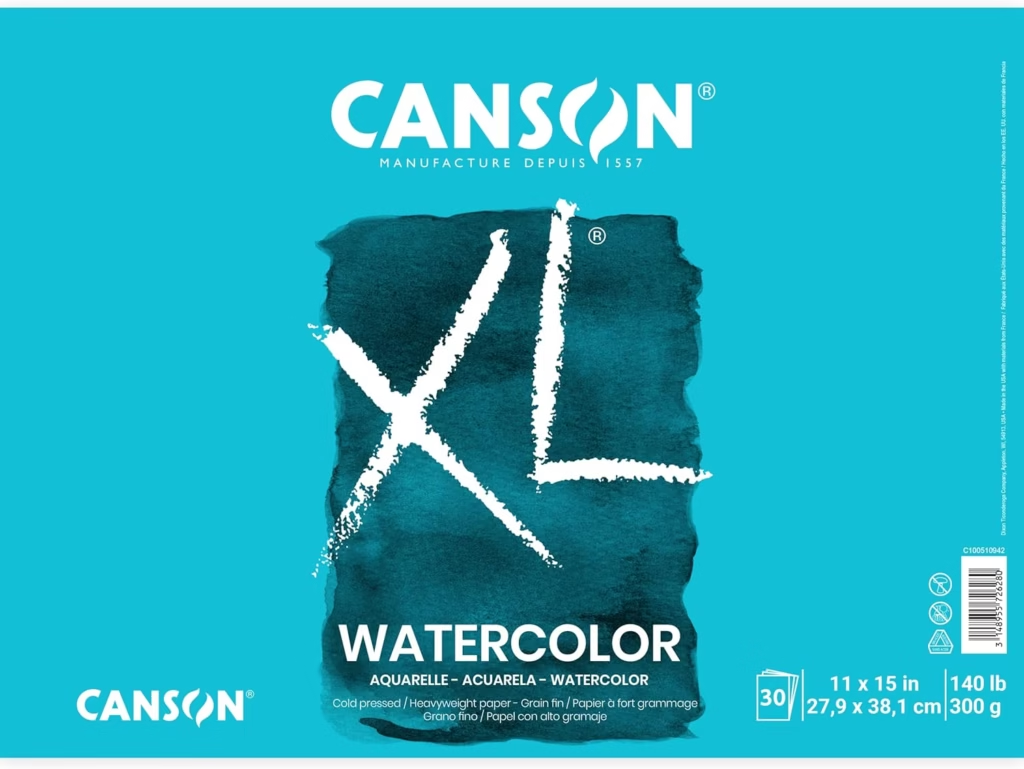
Rating: 7.5/10 | Price Range: $0.40-0.80 per sheet
Why It’s Essential: Every watercolor artist should start here. This student-grade paper offers the fundamental watercolor experience without the premium price, making it perfect for learning and experimentation.
Technical Specifications:
- Composition: Wood pulp with synthetic fibers
- Available Weights: 140lb (300 gsm)
- Textures: Cold Press
- Sizing: Basic internal sizing
Performance Analysis:
- Absorbency (7.0/10): Adequate for basic techniques
- Durability (6.8/10): Limited but sufficient for learning
- Color Vibrancy (7.2/10): Decent color response for practice work
- Texture Quality (7.0/10): Basic but functional texture
- Value (10/10): Unbeatable value for beginners
Best For: Complete beginners, practice exercises, art therapy, children’s art education Learning Value: Perfect for mastering water control without fear of wasting expensive paper.
Advanced Paper Selection Guide
Choosing by Technique
For Wet-in-Wet Techniques:
- Best Choice: Arches Cold Press 300lb
- Budget Option: Fluid 100 Cold Press 140lb
- Why: These papers maintain moisture longer and handle large water applications
For Detailed Botanical Work:
- Best Choice: Hahnemühle Leonardo Hot Press
- Budget Option: Winsor & Newton Hot Press
- Why: Smooth surface allows for precise detail and clean edges
For Loose, Expressive Painting:
- Best Choice: Saunders Waterford Rough
- Budget Option: Strathmore 400 Cold Press
- Why: Textured surfaces enhance spontaneous effects and granulation
For Layered Glazing:
- Best Choice: Fabriano Artistico Cold Press
- Budget Option: Canson Heritage Cold Press
- Why: Superior sizing allows for multiple transparent layers
Understanding Paper Weights
Paper weight significantly impacts your painting experience and determines which techniques you can successfully employ. The lightest option, 90lb (190 gsm), offers budget-friendly access to watercolor painting but comes with limitations. These lightweight papers require stretching before use with wet techniques to prevent severe buckling, making them ideal primarily for dry brush work, preliminary sketches, and practice sessions where experimentation matters more than final results.
The most popular choice among watercolor artists is 140lb (300 gsm) medium-weight paper, which strikes an excellent balance between cost and performance. This weight handles moderate water applications with minimal buckling, making it versatile enough for most watercolor techniques without requiring the stretching process. Most artists find this weight sufficient for serious work while remaining accessible for regular use.
When you’re ready to invest in premium materials, 300lb+ (640+ gsm) heavyweight papers offer the ultimate watercolor experience. These substantial papers eliminate the need for stretching regardless of technique, providing a luxurious painting surface that remains completely flat even under heavy water applications. While the investment is significant, many professional artists consider heavyweight papers essential for exhibition work and important pieces.
Paper Texture Deep Dive
The surface texture of your watercolor paper fundamentally changes how paint behaves and how your finished artwork appears. Hot press papers feature an ultra-smooth surface that’s perfect for detailed work, clean edges, and precise control. This smooth finish makes every brushstroke visible, which can be both an advantage and a challenge. While botanical illustrators, architectural artists, and those pursuing photorealistic work often prefer hot press, beginners may find it unforgiving since it shows every mistake clearly.
Cold press texture represents the sweet spot for most watercolor artists, offering a versatile surface with medium texture that’s forgiving enough for beginners yet sophisticated enough for professional work. This semi-rough surface provides just enough tooth to hold paint effectively while still allowing for detailed work when needed. The texture enhances natural watercolor effects and makes it suitable for portraits, landscapes, and general watercolor painting, though it may be too textured for extremely detailed botanical work.
Artists seeking dramatic texture effects often gravitate toward rough surface papers, which feature pronounced texture that creates exciting interactions with watercolor pigments. This heavy texture excels at showcasing granulating pigments and adds natural character to expressive work and landscapes. However, the pronounced texture makes achieving smooth, even washes more challenging, making rough papers better suited for loose, abstract, or highly textured subjects.
The Science of Paper Sizing
Understanding sizing is crucial because it determines how your paper will interact with water and pigment, essentially controlling the fundamental behavior of your watercolor painting. Traditional gelatine sizing, made from animal collagen, has been the gold standard for centuries because it provides exceptional paint flow and excellent lifting capabilities. This sizing method, used in premium papers like Arches and Saunders Waterford, creates the perfect balance of absorbency and surface tension that allows for sophisticated watercolor techniques.
Modern papermaking has introduced synthetic sizing as an animal-free alternative that often provides longer working time, allowing artists to manipulate paint for extended periods before it sets. Papers like Fabriano Artistico and Canson Heritage use these innovative synthetic compounds to achieve similar performance characteristics while appealing to environmentally conscious artists.
The application method of sizing also affects paper performance significantly. Internal sizing is mixed directly into the paper pulp during manufacturing, affecting the overall absorbency characteristics throughout the paper’s thickness. Surface sizing, applied to the finished paper surface, primarily controls paint flow and lifting capabilities. Many premium papers use both methods, with internal sizing providing foundational absorbency control and surface sizing fine-tuning the paint handling characteristics that artists experience directly.
Sustainability and Ethics in Watercolor Paper
Modern watercolor artists increasingly consider environmental and ethical factors:
Sustainable Choices:
- Papers made from sustainably sourced cotton
- Manufacturers with environmental certifications
- Vegan sizing options for animal welfare concerns
Top Eco-Friendly Options:
- Fabriano Artistico – Vegan sizing, sustainable practices
- Hahnemühle Collection – Advertises vegan sizing options
- Canson Heritage – Non-animal sizing
Storage and Care Tips
Proper care of your watercolor paper investment ensures optimal performance and longevity. The foundation of good paper care begins with appropriate storage conditions. Always store your paper flat in a dry environment where humidity remains consistent, as fluctuating moisture levels can cause warping even before you begin painting. Temperature extremes should be avoided, as they can affect the paper’s sizing and overall stability. When storing paper long-term, use acid-free storage materials such as archival boxes or folders to prevent chemical contamination that could affect paper quality over time.
Handling techniques significantly impact your paper’s condition and your painting success. Clean hands are essential when touching watercolor paper, as oils and residues from your skin can interfere with paint application and create unwanted effects. When moving large sheets, always provide proper support by lifting from multiple points rather than allowing the paper to bend under its own weight, which can create permanent creases or stress marks that will show in your finished painting.
Understanding when and how to stretch paper can save you considerable frustration during the painting process. Stretching becomes necessary only with papers under 300lb weight when using wet techniques, as heavier papers have sufficient body to remain flat naturally. When stretching is required, proper watercolor tape is essential rather than masking tape, which can damage the paper surface when removed. The key to successful stretching lies in patience during the drying process, allowing the paper to dry completely before removing the tape to prevent tearing or surface damage that could ruin your painting surface.
Budget Planning: Investment Strategy
Beginner Budget ($50-100 annually):
- Focus on Canson XL and Strathmore 400 series
- Buy small quantities of premium papers for special projects
- Invest in variety packs to test different brands
Intermediate Budget ($200-400 annually):
- Balance between Fluid 100 for practice and premium papers for finished work
- Bulk buying for cost savings
- Experiment with different textures and weights
Professional Budget ($500+ annually):
- Premium papers for all serious work
- Stock multiple weights and textures
- Consider handmade papers for special projects
Common Mistakes to Avoid
Every watercolor artist’s journey includes learning from paper-related mistakes, but understanding common pitfalls can save you time, money, and frustration. Beginning artists often fall into the trap of buying the cheapest paper available, then becoming discouraged when their techniques don’t work as expected. This false economy leads to poor painting experiences that can discourage continued artistic development. Equally problematic is choosing papers too light for your intended techniques, such as attempting wet-on-wet work on 90lb paper without stretching, which inevitably results in severe buckling and compromised results. Many beginners also struggle because they don’t understand how texture requirements relate to their painting style, choosing rough paper for detailed work or smooth paper for loose, expressive techniques.
As artists develop their skills, different challenges emerge. Intermediate painters frequently limit their growth by sticking exclusively to one brand or paper type, missing opportunities to discover papers that might better suit their evolving style. A particularly costly mistake at this level involves not testing new papers before important work, leading to disappointing results on pieces that represent significant time investment. Many intermediate artists also ignore weight requirements when planning techniques, assuming that all 140lb papers will behave similarly regardless of their intended water usage.
Advanced artists face more subtle but equally important considerations. A common oversight involves focusing solely on paper cost rather than evaluating cost-per-successful-painting, which factors in the likelihood of achieving satisfactory results. This narrow focus can lead to false economies where cheaper papers actually cost more due to higher failure rates. Experienced artists sometimes fail to factor in their continuing skill development needs, choosing papers based on current abilities rather than considering where their techniques are heading. Additionally, some established artists become too set in their preferences, ignoring new paper innovations and improvements that could enhance their work or solve long-standing technical challenges.
Where to Buy: Price Comparison Strategy
Online Retailers:
- Amazon: Convenience but limited selection
- Blick Art Materials: Professional selection, frequent sales
- Jerry’s Artarama: Bulk pricing, good for studios
- Direct from Manufacturer: Sometimes better prices, guaranteed freshness
Local Art Stores:
- Support local business
- Can examine paper texture before buying
- Often provide expert advice
Paper Mill Direct:
- Best prices for bulk orders
- Limited to specific brands
- Good for art schools and groups
Expert Tips from 6+ Years of Testing
Pro Insights:
- Always test a new paper with your most-used techniques before committing to large quantities
- Keep a paper journal documenting how different brands handle your favorite pigments
- Don’t dismiss student-grade papers entirely—they’re perfect for experimental techniques
- Buy variety packs when trying new brands to find your preferences
- Consider paper as an investment in your art’s longevity and your painting satisfaction
Advanced Techniques:
- Mix paper weights within a painting for different effects
- Use paper texture strategically to enhance your subject matter
- Experiment with both sides of the paper—some offer different characteristics
- Consider paper color (not just white) for mood and atmosphere
Frequently Asked Questions
Q: Should beginners start with expensive paper? A: No. Start with quality student-grade paper like Canson XL or Strathmore 400 to learn water control without pressure. Graduate to professional papers once you’re comfortable with basic techniques.
Q: What’s the minimum weight paper for serious watercolor work? A: 140lb (300gsm) is the practical minimum. Lighter papers require stretching and are prone to buckling. For stress-free painting, consider 300lb papers.
Q: Can I use both sides of watercolor paper? A: Yes, but one side is usually textured differently. Test both sides—sometimes the “wrong” side works better for your technique.
Q: How long does watercolor paper last? A: Properly stored, quality watercolor paper can last decades or centuries. Acid-free papers are essential for archival work.
Q: Is handmade paper worth the extra cost? A: For special projects and professional exhibition work, yes. For practice and learning, the premium isn’t justified.
Q: What’s the difference between blocks and pads? A: Blocks are glued on all sides, preventing warping while wet. Pads are bound on one side and require taping down or stretching for wet techniques.
Future Trends in Watercolor Paper
Emerging Developments:
- Increased focus on sustainable and vegan materials
- Smart papers that indicate optimal moisture levels
- Hybrid digital-traditional papers for mixed media work
- Improved synthetic alternatives to cotton
Market Predictions:
- Continued price increases for cotton-based papers due to agricultural costs
- Growth in eco-friendly alternatives
- More brands offering direct-to-consumer sales
For artists interested in exploring other paper-based media, understanding charcoal drawing paper characteristics can provide valuable insights into how different paper treatments affect artistic media beyond watercolor.
Your Perfect Paper Journey
Choosing the right watercolor paper is a deeply personal journey that evolves with your skills and artistic vision. Start with our recommendations based on your current level, but don’t be afraid to experiment. The “perfect” paper is the one that helps you achieve your artistic goals while staying within your budget.
My Top Recommendations by Category:
- Overall Best: Saunders Waterford (quality-price balance)
- Premium Choice: Arches (when budget allows)
- Best Value: Fluid 100 (professional quality, fair price)
- Beginner’s Choice: Strathmore 400 Series (perfect stepping stone)
Remember, great art has been created on every paper in this guide. The key is understanding your tools and pushing them to their limits. Start with good paper, learn proper technique, and let your creativity flow.
Ready to Start Your Watercolor Journey? Begin with a small selection from our top recommendations, test them with your favorite techniques, and discover which papers speak to your artistic soul. The perfect watercolor painting starts with the perfect piece of paper.
Have questions about specific papers or techniques? The watercolor community is incredibly supportive—don’t hesitate to reach out to fellow artists or visit local art stores for hands-on advice.
This guide represents six years of hands-on testing and professional watercolor experience. Paper preferences can be highly individual, so while these rankings reflect thorough testing, your personal experience may vary based on your unique techniques and style.

